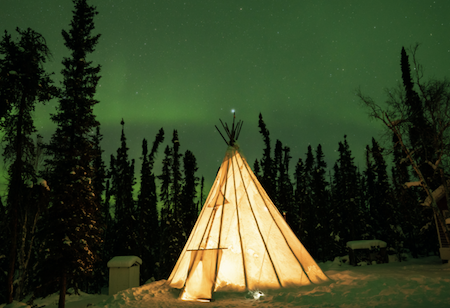Camping cannot be imagined without tents. They are essential equipment for trekking and backpacking. And when it comes to tents there are mainly two options to choose from. The options are freestanding tents and non-freestanding tents.
The freestanding tents offer flexibility and more room than their counterpart. The tents can be pitched anywhere without thinking about the terrain. In strong windy weather, you do not have to worry about support poles either.
Now you might be curious to know more about this tent and you might be wondering “What is a freestanding tent?” You will get all the answers right here.
In this article, we will solely focus on freestanding tents. So, you can understand the pros and cons of these tents and decide your next purchase.
What Is A Freestanding Tent?
They are tents that do not need to be anchored to the ground. They solely depend on their pole system to be pitched properly. This pole system acts as the exoskeleton of the tent.
The poles are attached in a systematic way and most of the time it is dome-shaped. Then the tent is attached to the pole system via multiple clips.
So, there is no support system inside the tent. That makes it much more spacious. The tents also can be pitched without ground stakes.
So, this makes them easy to move for your convenience. This feature also makes sure that no matter how rough, or uneven the ground is you can pitch your tent.
However, you do have to stake the tents, it is not for support but rather as a countermeasure against windy or rough weather.
Most freestanding tents also come with double walls. This means that you get better protection and ventilation from rain or heat.
There are also some cons you should know about. A freestanding tent has much more components than other tents. That means there are more things that can go wrong.
If the support poles break you cannot pitch your tent. There is also the weight to consider. The pole system, the tent and other components make them heavier than non-freestanding tents.
So, you generally would need to split the burden between two people. These are the things you should keep in mind if you want to purchase a freestanding tent. If they work for you then go ahead and get one for yourself.
How To Set Up A Freestanding Tent
The freestanding tents are not easy to pitch for beginners. It would take some time to understand the mechanism and figure out the whole process. However, the components are color tagged to make the set-up easy.
There are some components that will come with your freestanding tent. They are the footprint or the floor of the tent, the pole system, the tent, and ground stakes. We will go through the set-up process step by step.
Step 1: Attach The Footprint To The Tent
We start with the footprint and the tent. You will see grommets in both of them and they are color-coded. They need to be attached together using the grommets according to the color-coding. You can clip them together or tie them with a rope.
Step 2: Set Up The Pole System
Then we set up the pole system. They are generally dome-shaped so that is what we are aiming for. The poles can be connected with each other to create the dome. They also come with an instruction manual. So, follow it to set up the pole system.
Step 3: Clip The Tent To The Pole System
Now is the time for the tent to be clipped to the pole system. If you completed the other steps properly, this should be a breeze. Attach every clip you see with the pole system and it will start looking like a tent.
Step 4: Stake The Tent To The Ground
Finally use the ground stakes and stake the tent to the ground. Remember you are not doing this for tent support but rather for countermeasure against the weather. If the surface is too hard for stakes just use weights like big rocks to weigh it down.
If you follow these steps your tent should be up in no time. It is gonna be a little troublesome for the first time. However, as you get used to the tent, it will be an everyday task.
Benefits Of A Freestanding Tent
Freestanding tents are used by the majority these days. It can be said they are in fashion now. Many prefer them over non-freestanding tents.
The tents offer you many things. In this part of the article, we will list them out so you can decide if you want it to be your next tent.
#1. Versatile
The tents can be pitched anywhere. Your ideal camping site can be uphill or on rough terrains. It is because they do not need to be tethered to the ground to set up properly.
They can also be moved easily. So, if you change your mind you can always move it somewhere that is more to your liking.
#2. Superior Protection And Ventilation
Most of the freestanding tent comes with double wall. That means they come with a built-in tent fly. So, they are completely waterproof.
The inner wall also has breathable fabric. So, they have better ventilation and in hot weather, you can spend long hours in your tent.
#3. Spacious
Freestanding tents are supported by an external system. That means they offer more room than other tents. With them, you get more shoulder space and in rough weather spending time in the tent is easier.
#4. Price
The tents cost as much as non-freestanding tents. So, you are not spending more on them. However, there are some ultralight versions of freestanding tents which are expensive. They are lighter but you have to sacrifice the protection.
Conclusion
The article should answer everything you wanted to know about freestanding tents. These tents are loved by the camping community and they will recommend them to you in a heartbeat.
These tents are the modern rendition of camping and they offer a lot for their price.
So, if you are thinking of getting one for yourself, try it out. It is better to see for yourself what works best. Also happy camping!


